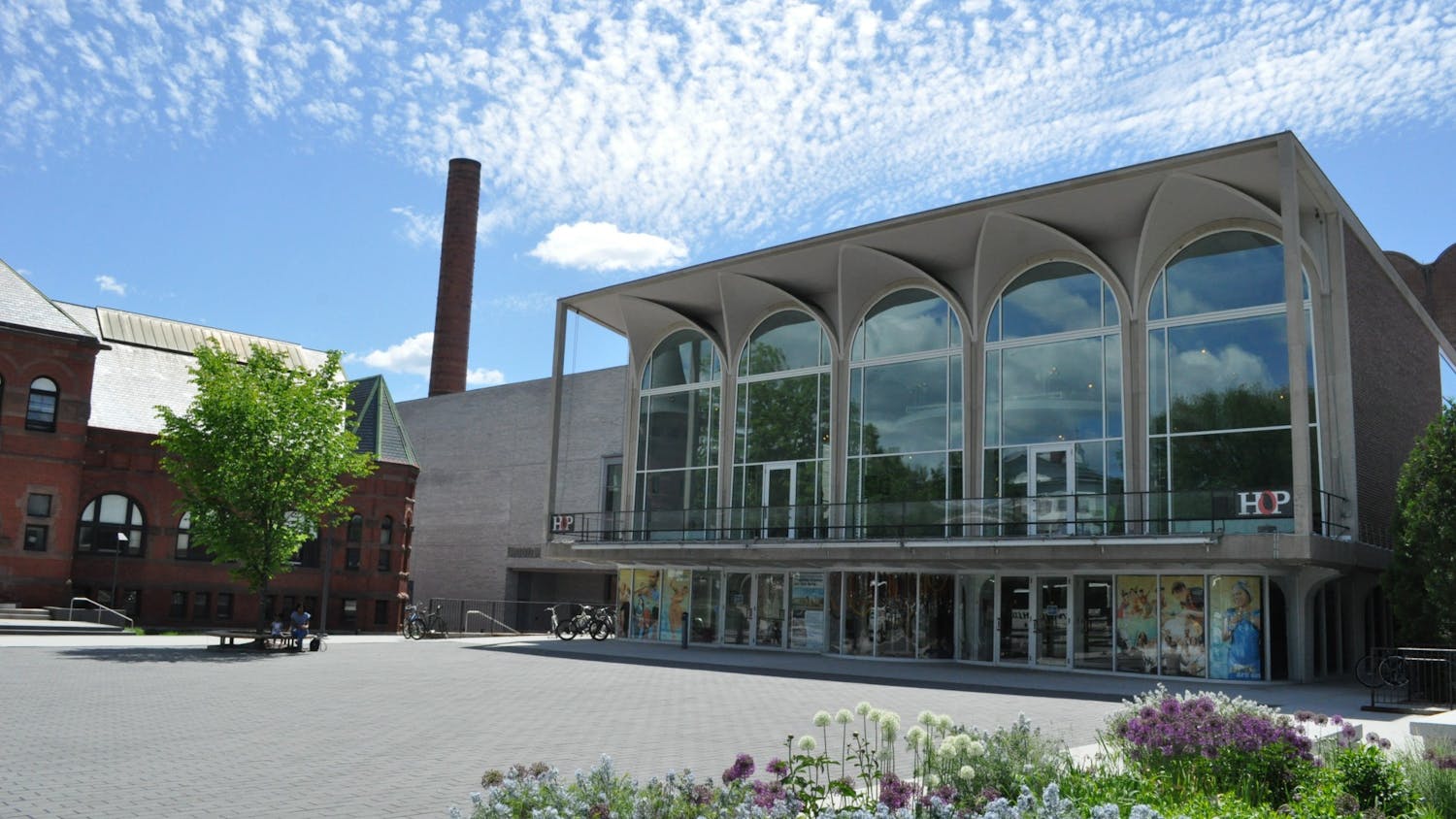The main focus of Thompson's exhibition, which opened on Tuesday, is the human silhouette, specifically the heads and faces of women. These figures and indeed, Thompson's work in general are inspired partly by Thompson's fascination with 15th-century Italian art, according to the artist's web site.
When she is not at Dartmouth, Thompson often spends time in Italy, where she finds source material for her artwork in the rich artistic and cultural traditions of the country, from "medieval illuminated manuscripts, textiles Renaissance paintings [and] Italian ceramics," according to the artist's web site.
Yet while Thompson draws her inspiration from older works of art, her chosen medium collage and her color palette are decidedly modern, resulting in updated takes on artistic tropes. "Mother and Child," for example, is one such collage with a historical basis that brings new life to the long tradition of Christian iconography in Western art.
In addition to drawing inspiration from Italian art, Thompson incorporates into her work many organic molecular structures. Many of her works look like cross-sections of beehives or clusters of cells seen through a microscope. Unlike the slides one might study in biology, however, these "cells" are in a kaleidoscope of bright colors not typically found in nature.
"I like mixing systems that refer to both the inorganic (text, architectural patterns) and organic (botanic, cellular). The systems vary in reference to scale as well as form, so hopefully they keep allowing a viewer to make his/her own connections," Thompson wrote in an e-mail to The Dartmouth.
A cluster of three works titled "Tipsy I, II and IV" is a prime example of Thompson's use of organic and inorganic imagery. Executed mainly in a variety of blues, greens and yellows, many of the patterns Thompson incorporates into the image look like seaweed, grass and reptile scales. The fragmented letters and numerals embedded in the rest of the pattern, however, add a human element to the works.
"These patterns' reflect the decorative urge of artists and craftspeople the world over, so fragments of text create a pattern in the way drawings of cells do, especially when the text is fragmented so it is unreadable," Thompson wrote.
It seems that Thompson's art is all about balance balance between historical and contemporary source material, between the 2-D surface of the collage and the sense of depth created entirely out of pieces of paper, and between the natural and man-made worlds.
"[Her art is both] familiar and novel, historical and contemporary, playful and sophisticated," studio art professor Louise Hamlin said in an interview with The Dartmouth.
The most affecting piece in the exhibit, "Group," is also its largest. Prominently placed on the center of the gallery's three walls, the size of the piece contrasts beautifully with the intricacies of Thompson's details and emphasizes the skill and craftsmanship of the artist. The collage features several figures positioned in a circle, standing with their heads bent and their arms around each other. The rich color scheme of the pieces of the collage contributes to the sense of warmth and tenderness of the work as a whole.
"More than anything, [I want viewers to experience] a feeling of joy and delight that went into the work and a feeling that the work continually engages the eye of a person and creates a desire to keep looking at it making new discoveries and connections in the complexity of it," Thompson wrote.
Perhaps most impressive about Thompson's work is the intricacy of the details: from far away, the collages look like paintings, rather than thousands of pieces of paper. It seems that Thompson has a rare gift, in the ability to make beautiful art out of just about anything.
Professor Thompson has taught at Dartmouth since 1979, and offers courses in drawing, painting, and collage. Her work has been exhibited in galleries across the country. Her exhibition at the Strauss Gallery will be on display through Sunday, May 2.




